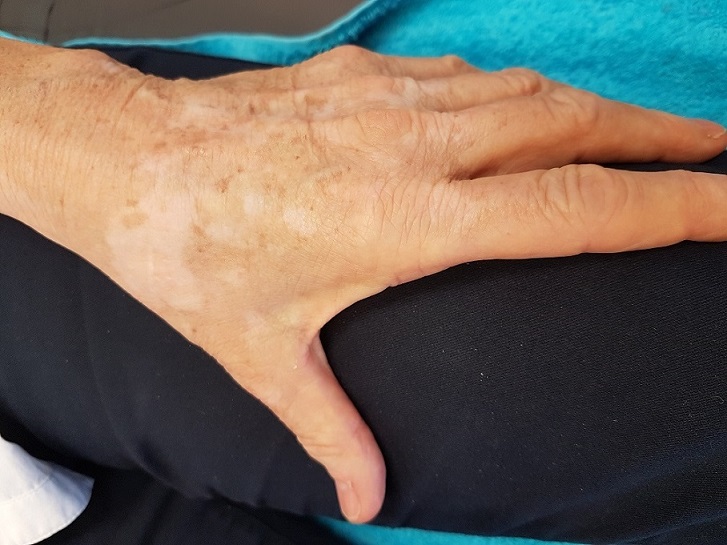If a white (or pale) patch with a sharp margin appears on the skin and does not change in appearance within two weeks, a vitiligo diagnosis should be made to address the cause of the problem. The first vitiligo patch often appears on skin areas that are exposed to the sun. Before any of such spot enlarges in size or enters the mouth/nose and leaves hair color to grow white with the skin, consult a doctor.
Making an accurate diagnosis of vitiligo, especially in its early stages plays a crucial role in pigment recovery. A skin biopsy confirms the skin disorder. Since there are no specific diagnostic tests for detecting the chronic skin disorder, initiating diagnosis rests on the information provided by the person with vitiligo. Ideally, a dermatologist who specialized in autoimmunity should carry out the diagnosis.
An expert makes the diagnosis based on physical examination, a detailed family history, and a detailed history of the individual’s current and past medications. During this thorough examination, an individual may be asked question related to his/her overall general well being.
A dermatologist records the exam into a table to observe the pattern. Several international scales have been developed to gauge the severity (Vitiligo Extent Score), and quality of life (Vitiligo Impact Patient Scale) during the course of long-term skin disorder.
Tests used for vitiligo diagnosis
The visual examination and subsequent skin biopsy is the first and most important diagnostic tool for an individual suspected of having vitiligo. At times, your doctor may also prescribe blood tests to rule out other conditions that could be causing vitiligo-alike symptoms. The additional testing (for underlying autoimmune diseases, such as Thyroid, Anemia or Diabetes) helps the expert exclude other skin disorders such as Leprosy or Leucoderma that mimic the appearance of vitiligo. Commonly recommended tests to determine the exact cause of vitiligo include ANA (Antinuclear Antibody), Thyroid peroxidase antibody (TPOAb), comprehensive metabolic panel, thyroid panel including Free T3, Free T4 and TSH, and lupus panel.
If the expert suspect vitiligo to be the result of nutrient deficiency, the patient is asked to get following checked:
- Vitamin B12
- Vitamin C
- 25-Hydroxy-Vitamin D
- Folic Acid or Folate
- L-Phenylalanine
- Zinc levels
- Copper levels
To prescribe the best medication for the skin disorder, identifying the vitiligo type is crucial. In Nonsegmental Vitiligo (NSV), the spreading tendency of white patches is unpredictable. In the case of Segmental Vitiligo (SV), the affected area of the skin usually does not expand with time. A tissue biopsy can help an expert establish the difference. In a few cases, both NSV and SV can co-exist, which is known as Mixed Vitiligo in everyday language.
Prognosis of vitiligo
Prognosis of vitiligo treatment depends on certain criteria, including the location, duration, extent of spread and disorder activity. It also depends on the general health of an individual and the presence/absence of any of the systemic illnesses such as thyroid disorders or other auto-immune diseases.
Vitiligo over bony prominences (patches around the lips, on the fingertips and toes) and generalized-extensive vitiligo usually show slow or no repigmentation. Since it takes some time to control the disorder activity and regulate the immune system, an individual may notice the occurrence of some new spots even after starting the treatment.

